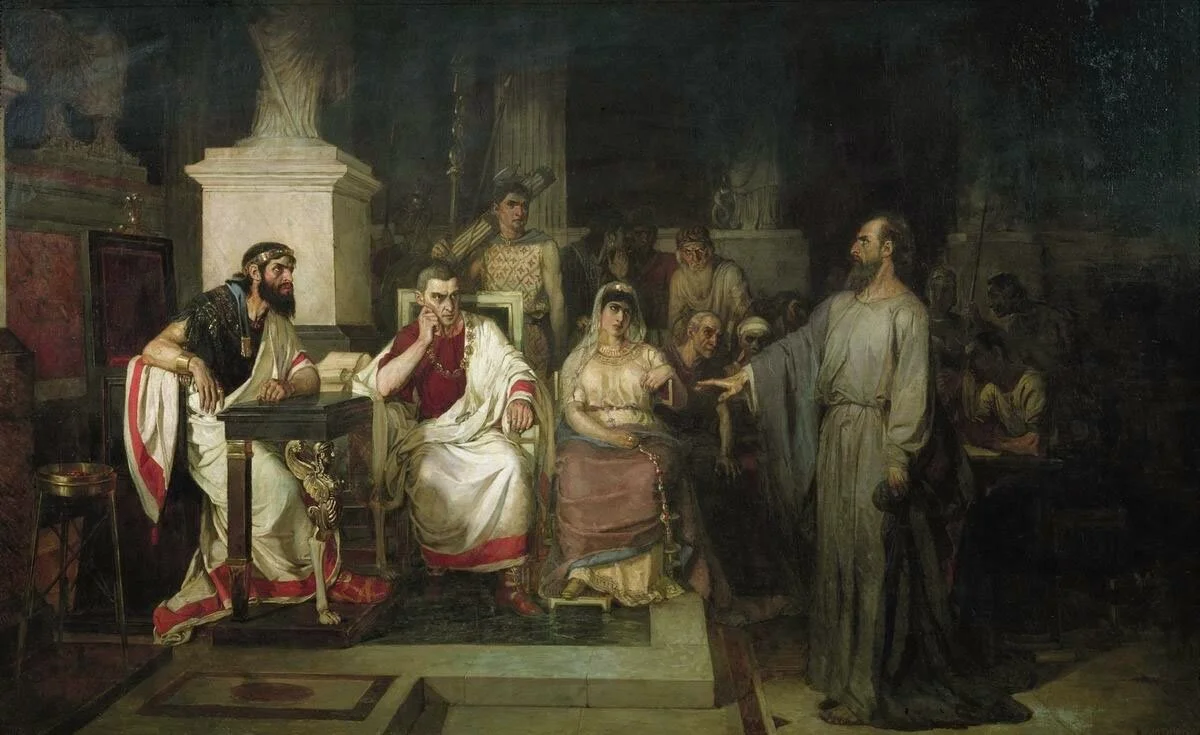Tulipmania
In 1630’s Holland, as a consequence of inflation, tulips became so expensive that people could buy a house for a rare breed. The apparent craziness was called Tulipmania. In 1637, the tulips crashed in price and the people only had a flower to show for it. Bitcoin is a pretty tulip. Gold is money by default. History repeats.
By the early 17th century, the Dutch Republic was experiencing monetary inflation as Holland became a center for commerce and sound money, but it wasn’t because the government was printing money.
Instead, investors were fleeing neighboring countries that were debasing their coins to pay for the 30 Years War (1618-1648)- which was the equivalent of their generation’s WWI and WWII combined (1914-1945). Simultaneously, the Dutch were pirating Spanish (and Portuguese) silver in the Dutch War for Independence from Spain (1568–1648). As new money flowed into the country, prices rose (actually, quite similar to the Bretton Woods agreement for the USA following WWII).
Doug French, in an article for the Mises Institute entitled, The Truth About Tulipmania, wrote,[1]
“But what made this episode unique was that the government policy did not expand the supply of money through fractional reserve banking which is the modern tool. Actually, it was quite the opposite. As kings throughout Europe debased their currencies, through clipping, sweating or by decree, the Dutch provided a sound money policy, which called for money to be backed one hundred per cent by specie. This policy, combined with the occasional seizure of bullion and coin from Spanish ships on the high seas, served to attract coin and bullion from throughout the world.”
Basically, there was a general boom in business and prices and people thought that they could buy tulips at a low price and sell them at a higher price, because everyone knew that tulips always go higher (FOMO).
Similarly, bitcoin is rising in price because the government is printing money to cover the debt that we need to maintain our current, deteriorating standard of living. General price inflation seems to be breaking out as evidenced by copper, gasoline, lumber, and meat.[2][3]
Dr. Michael Burry of The Big Short fame, even came out on twitter to warn about inflation on February 20th, 2021. He tweeted,[4]
“‘Throughout these years the structure was quietly building itself up for the blow. Germany's #inflationcycle ran not for a year but for nine years, representing eight years of gestation and only one year of #collapse.’ Written in 1974 re: 1914-1923. 2010-2021: Gestation.”
The US dollar supply (M2)
Because the Germans printed money, the price of their stocks skyrocketed.
Similarly, the stock market, as represented by the Dow Jones, has been inflated higher.
Like with tulips and stocks, bitcoin is getting expensive because the dollar is becoming worth less as the money supply increases.
“We can guarantee cash benefits as far out and at whatever size you like, but we cannot guarantee their purchasing power.” -Fed Chairman Alan Greenspan, US Senate Committee on Banking, Housing and Urban Affairs, Feb 16, 2005.
Printing money lowers interest rates and creates bubbles. Importantly, bitcoin has only existed in a time that central banks have been enacting zero interest rate policies (ZIRP) by printing money to keep interest rates low (to prop up bubbles). Bitcoin has thrived in a Summer of low interest rates, but can it survive a high interest rate Winter?[5][6]
The reason that the Fed is printing money is because US citizens are broke and either need a job that has already been taxed and regulated overseas or more stimulus payments. Since few politicians will risk losing an election on raising taxes during a lockdown (people are already fleeing highly taxed states for more freedom) and they won’t get elected cutting grandma’s social security cheques, the Fed will fill the gap by printing money (M2) and loaning it to the US taxpayer.
“The United States can pay any debt it has because we can always print money to do that. So there is zero probability of default.“ -Former Federal Reserve Chairman Alan Greenspan, Meet the Press, August 7, 2011.
The day before Dr. Burry’s tweet, Jeffrey Gundlach, a notable investor, tweeted out,[7]
“Even without any further stimulus, the Federal Government’s Debt will cross over $28 Trillion in 16 days. If the $2 Trillionish stimulus passes it will hurdle $30 Trillion in no time. Meanwhile, total US unfounded liabilities will cross over $160 Trillion in 30 days.”
Bitcoin could replace the dollar, but that is only to the extent that people imagine that they own gold.
The theory behind owning gold and silver is that they have been used to facilitate trade for most of human history. Paper dollar bills were originally receipts for gold and silver. They were bills to be paid in silver or gold dollars.[8]
Bitcoin is just a receipt for imaginary gold. That is why it is marketed as a gold coin with a B on it.
When the US defacto defaults by hyper-inflating the dollar to pay for the debt, as Dr. Burry warns, the metals will be used as money once again. That is why most nations and central banks own gold today and not just the receipts that they print.[9]
Comparing the assets of the billions of people who own gold and silver vs the million(s?) who own bitcoin, the gold and silver market should have more for sale. People with precious metals do not need to use bitcoin to facilitate trade.[10]
Tulipmania ultimately crashed because the money supply dried up when investors looked for cheaper foreign markets and because the Dutch government banned the trade of tulip contracts.[11]
When the money supply goes back to gold and silver, bitcoin will go the way of tulips priced in gold…
The price in the above chart is in grams of gold guilders, with each gold gram equal to 12 grams of silver. If the 17th century Dutch had used paper dollars, then paper price of tulips may have gone to $1,000,000 while the gold price collapsed.
… or bitcoin will be as good as gold.
During Tulipmania, people were imagining all the gold that their tulip receipts were worth.[12] Bitcoin is a receipt for imaginary gold. Gold is money by default. History repeats.[13]
[1]https://mises.org/library/truth-about-tulipmania
[3]https://www.marketplace.org/2021/02/19/inflation-hits-gasoline-lumber-and-meat/
[4]https://twitter.com/michaeljburry/status/1363239134836314112
[5]https://www.hamiltonmobley.com/blog/iorr-ioer-and-ffr
“Per the Saint Louis Federal Reserve’s Federal Reserve Economic Data (FRED) website,
‘The federal funds rate is the interest rate at which depository institutions trade federal funds (balances held at Federal Reserve Banks) with each other overnight. When a depository institution has surplus balances in its reserve account, it lends to other banks in need of larger balances. In simpler terms, a bank with excess cash, which is often referred to as liquidity, will lend to another bank that needs to quickly raise liquidity. (1) The rate that the borrowing institution pays to the lending institution is determined between the two banks; the weighted average rate for all of these types of negotiations is called the effective federal funds rate.(2) The effective federal funds rate is essentially determined by the market but is influenced by the Federal Reserve through open market operations to reach the federal funds rate target.(2)
The Federal Open Market Committee (FOMC) meets eight times a year to determine the federal funds target rate. As previously stated, this rate influences the effective federal funds rate through open market operations or by buying and selling of government bonds (government debt).(2) More specifically, the Federal Reserve decreases liquidity by selling government bonds, thereby raising the federal funds rate because banks have less liquidity to trade with other banks. Similarly, the Federal Reserve can increase liquidity by buying government bonds, decreasing the federal funds rate because banks have excess liquidity for trade. Whether the Federal Reserve wants to buy or sell bonds depends on the state of the economy. If the FOMC believes the economy is growing too fast and inflation pressures are inconsistent with the dual mandate of the Federal Reserve, the Committee may set a higher federal funds rate target to temper economic activity. In the opposing scenario, the FOMC may set a lower federal funds rate target to spur greater economic activity.’”
[6]https://www.hamiltonmobley.com/blog/interest-rates-and-inflation?rq=zirp
“Since the bursting of the Housing Bubble in 2008, central banks have been enacting so-called Zero Interest Rate Policies (ZIRP) in the USA and Negative Interest Rate Policies (NIRP) in Europe,[2] while other central banks have been doing the same. The Fed has printed money in Quantitative Easing (QE 1, 2, and 3)[3] and Operation Twist[4] while keeping interest rates near zero per cent until Dec 2015 when the Fed began to raise the Federal Funds Rate, which influences all interest rates. However, in 2019 the Fed announced that they were no longer raising interest rates.”
[7]https://twitter.com/TruthGundlach
[8]https://www.hamiltonmobley.com/blog/the-commodity-theory-of-money
[9]https://schiffgold.com/key-gold-news/poland-gobbles-up-gold-plans-to-bring-it-home/
[10]https://www.hamiltonmobley.com/blog/1kncqmn58ej171as8ol6zjpkkle7hm
[11]https://mises.org/library/truth-about-tulipmania “Del Mar concedes in a footnote that the mania had already been discouraged on April 27th, 1637 by a resolution of the States-General that canceled all contracts.”
[12]https://amsterdamtulipmuseumonline.com/pages/part-4-tulip-mania Per the Amsterdam Tulip Museum,
“In 1636, the Dutch created a 'futures' market. While bulbs were dormant underground (and unable to be moved without killing the flower), people could buy and sell contracts for bulbs that would be blooming in the Spring. As interest continued to grow, these contracts could change hands dozens of times before the bulbs themselves were even out of the ground.”
[13] https://www.hamiltonmobley.com/blog/not-worth-a-continental












